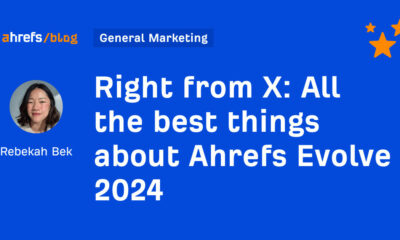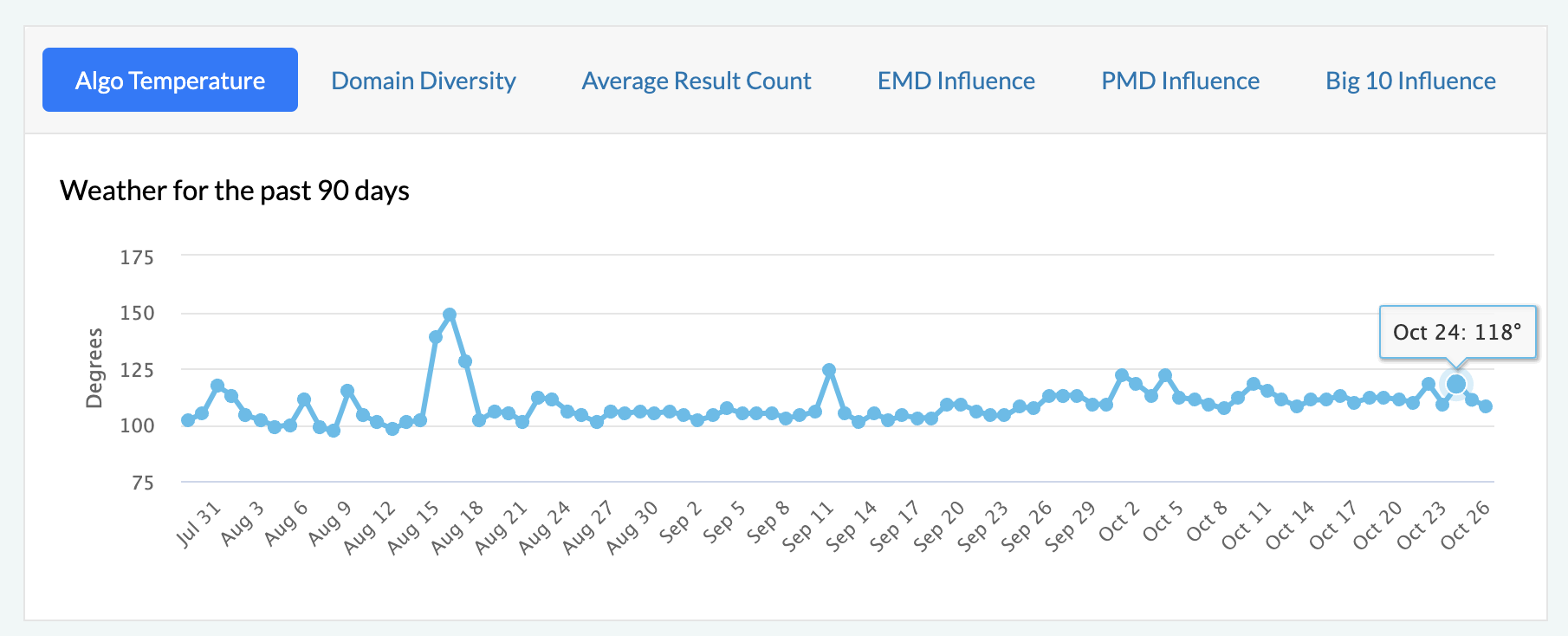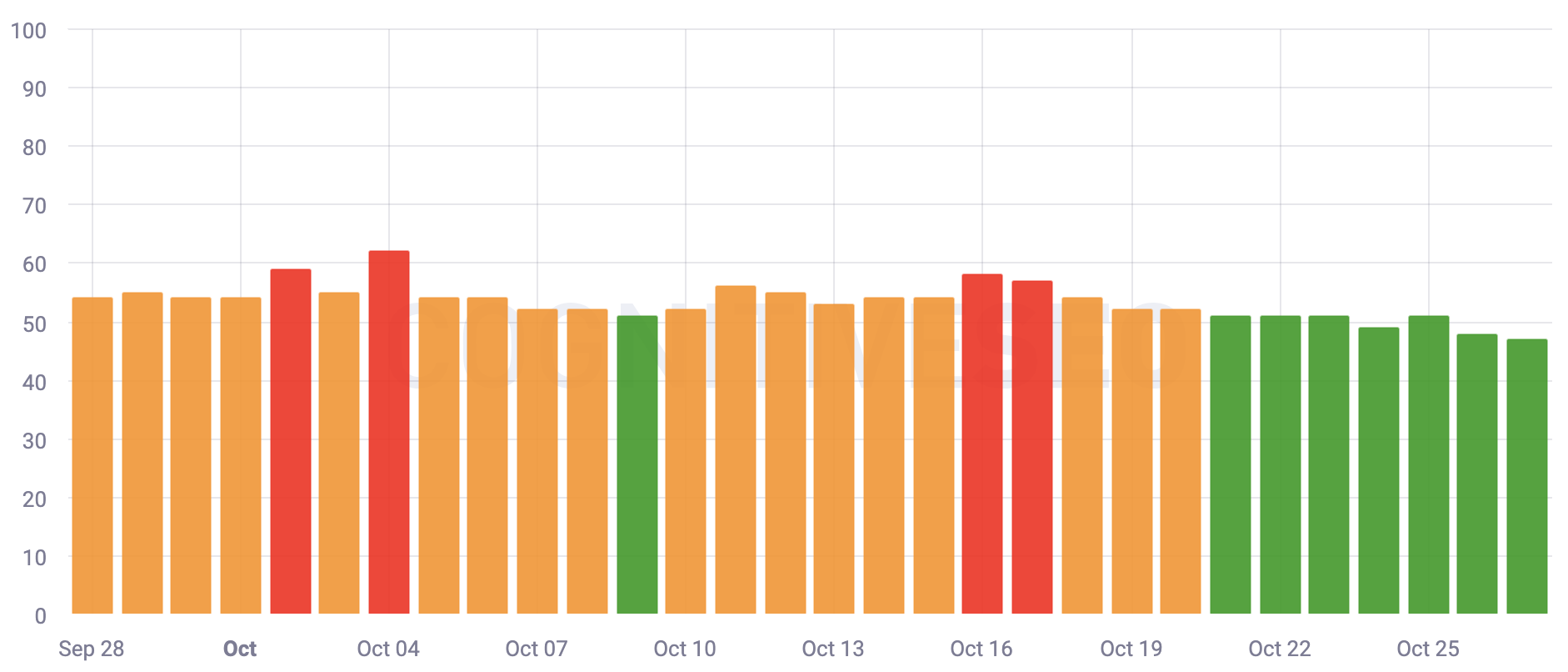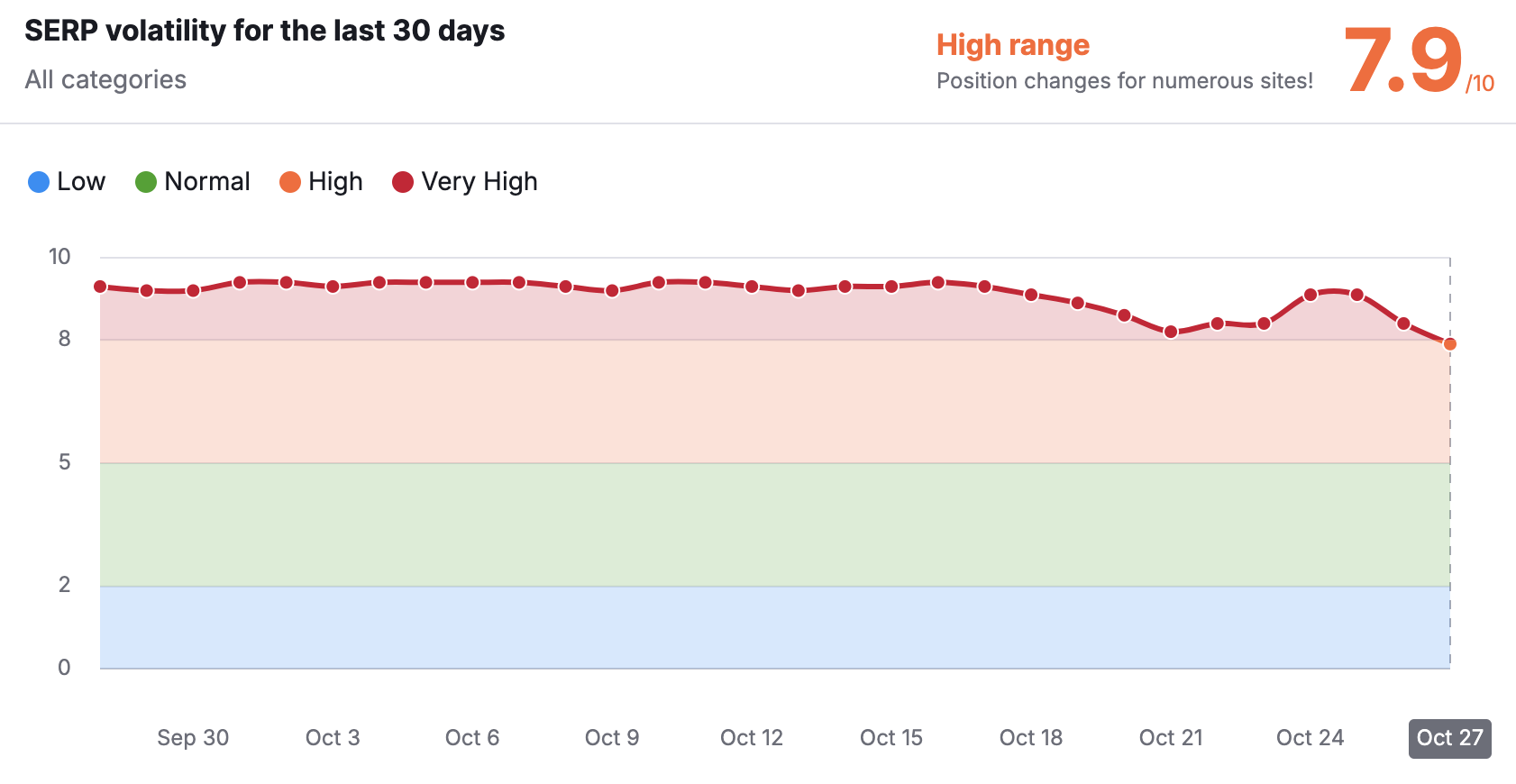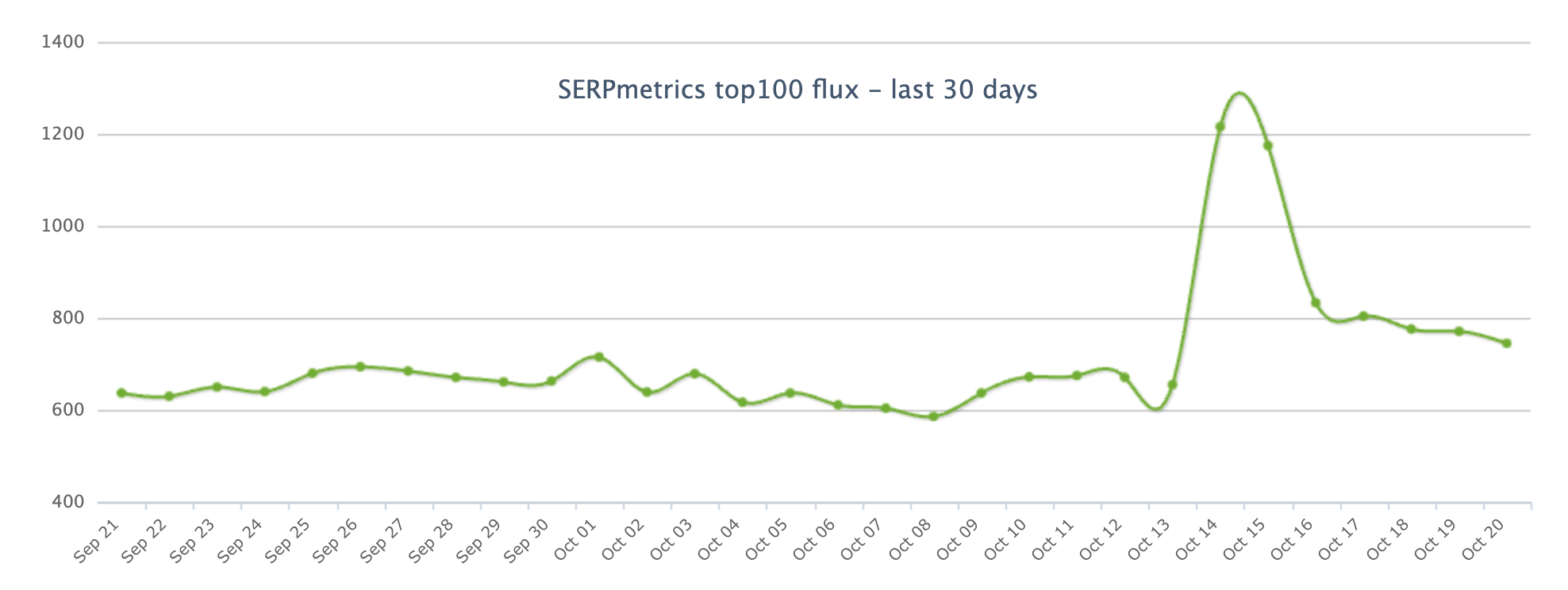SEARCHENGINES
Meta Tags for SEO: Definition, Examples, & Best Practices

Let’s talk about meta tags: what they are, why they matter, and how to do them better.
If you found this article via a search engine, there’s a good chance you found and clicked this article because of meta tags.
Meta tags are the foundation of SEO, and they are the first thing you’ll find yourself setting up when building a web page.
What Are Meta Tags?
Meta tags are a type of HTML tag that provides search engines with information about a website page.
Let’s take a look at the basic elements.

The title and description tags make up almost the entire entry.
If not for these meta tags, all you’d see in Google SERPs would be my URL.

Title and description tags are the two most-used tags for SEO purposes, but SEO isn’t the only part of digital marketing.
Advanced digital marketing requires the use of even more tags that improve page rank and overall user experience.
Just like this search result, you’ll soon find out that these tags control how your entire digital presence is viewed and navigated.
Machines can read URLs just fine. If I wrote for machines, my website would look like this:
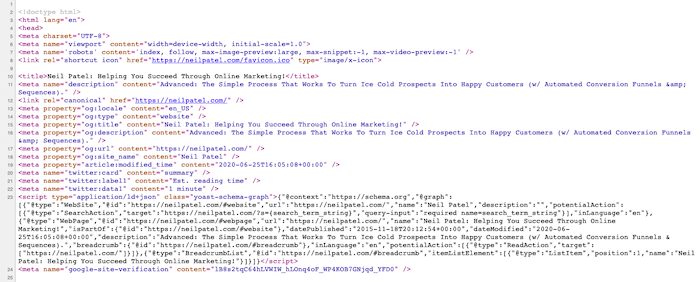
Google prioritizes certain tags because they provide context for people.
I built my website for people as well, so it looks like this:
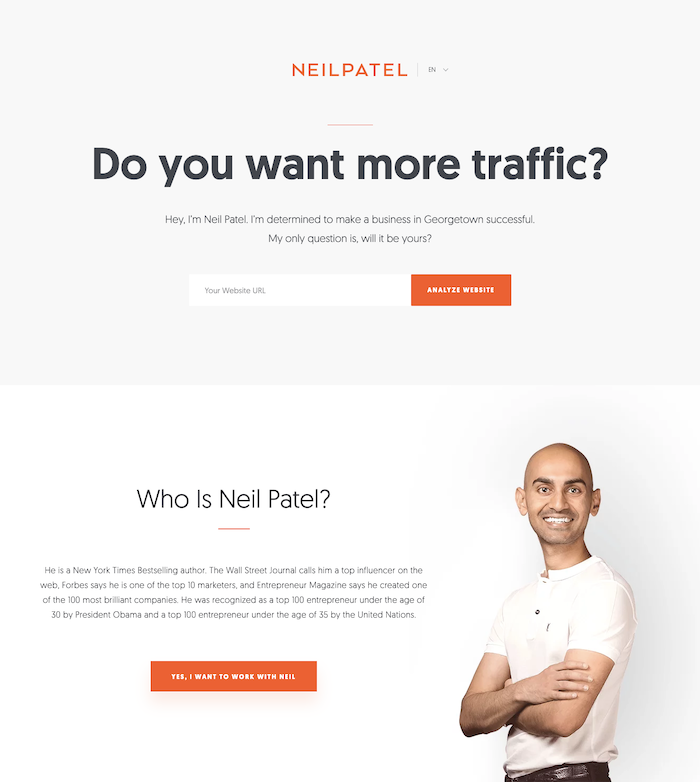
This polish is what marketing is all about.
In this blog post, we will explore meta tags and see how they affect your overall digital marketing efforts.
While simple, the devil is in the details, and every detail counts.
How Meta Tags Affect Brand Image and Click-through Rates
You absolutely can judge a book by its cover. It’s what covers are designed for.
Your title and meta description tag create the cover for your web page. They’re your first impression on most visitors.
It’s not just about search engines, but how we view the Internet.
Reddit is a basic link-aggregation site that takes away all the bells and whistles.
Reddit depends on the title and image to entice conversations and clicks.
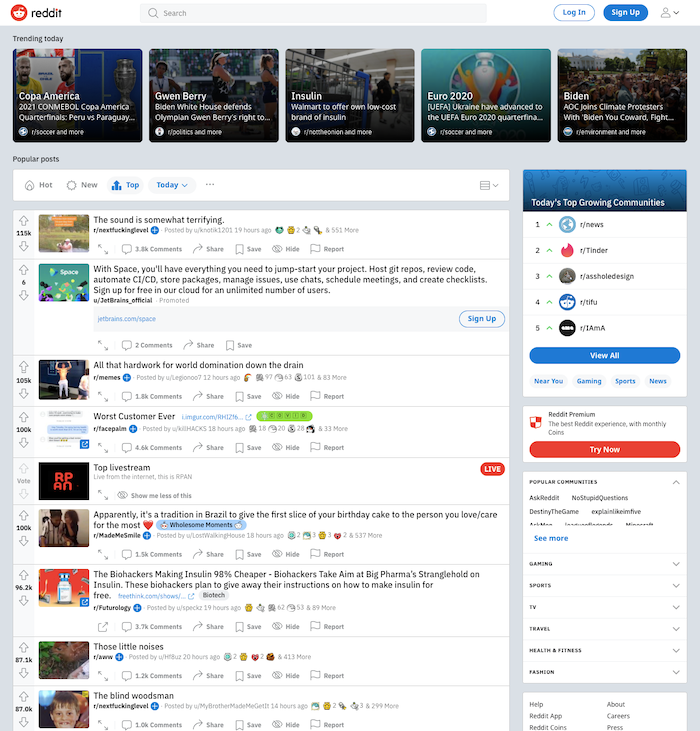
Using meta tags correctly is like using the correct format for a business email.
Sure, you can put whatever you like out there, but there’s a level of professionalism that’s expected at some point.
Even Amazon will only give you a picture, title, and short description to make your point.
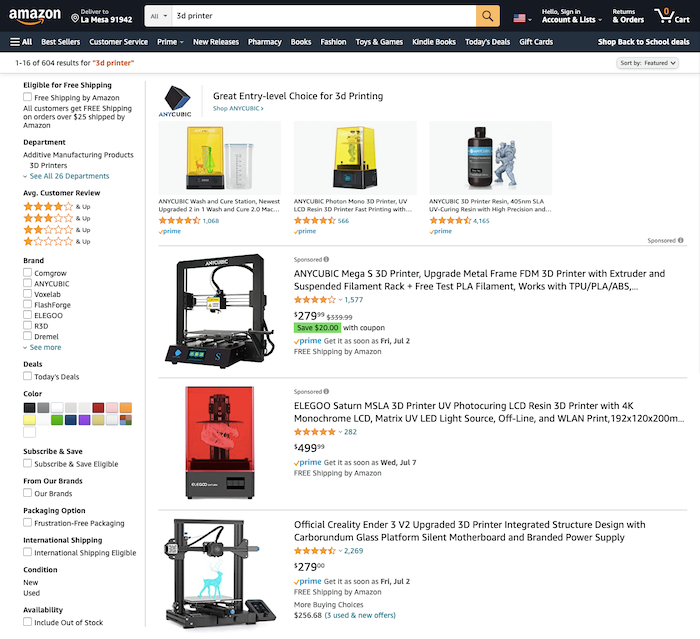
Think of these tags as your elevator pitch.
You’re given about as much space as a Tweet to sell your entire brand and product.
This means you need to nail it.
You can’t just call in this detail and polish everything else. If you do, nobody will ever see the rest of what you polished.
We already know how meta tags affect SEO, but that’s not the only element.
Meta tags will make your email marketing and marketing automation efforts easier by providing information for emailed links.
Tags are a crucial element that determines what my automated social media posts look like.
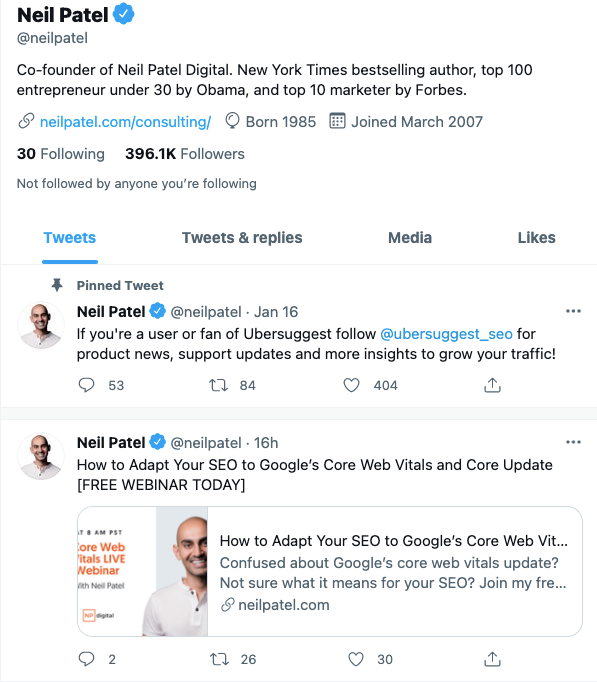
When other bloggers, YouTubers, and social media influencers (and micro-influencers) share your content, tags make it easier.
Think of meta tags as the packaging for your product.
If your packaging isn’t spot-on, nobody will ever buy your product, no matter how great it is!
What are some best practices to implement for tags?
Meta Tag Best Practices
There are a TON of different HTML tags that can be used on a web page. We’re only going to focus on a handful of significant tags.
We’ll start with the one that might have brought you here today.
1. Title Tags
It’s not technically a meta tag, but it shows up in the header and is used as one.
As of July 2017, the character limits for title tags in Google search results are 78 on mobile devices and 70 on a desktop.
However, that doesn’t necessarily mean you should use all those characters, and 60 is the generally recommended limit.
Long-tail keywords make a difference.
Here are the top meta titles in the SERPs for “How to make content marketing effective.”
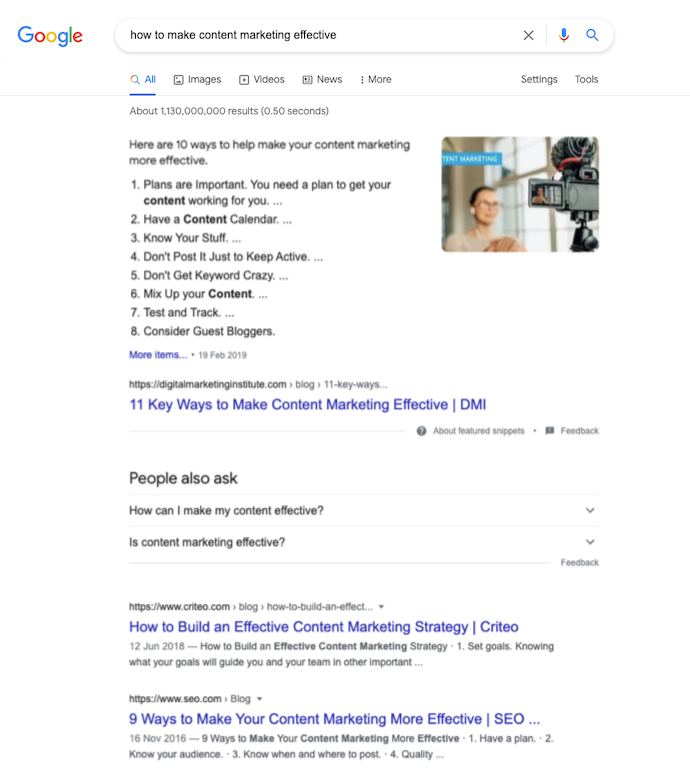
By adding the year, we get an entirely new set of results for “how to make content marketing effective 2021.”
Some users will want basic information, while others will want the most current.
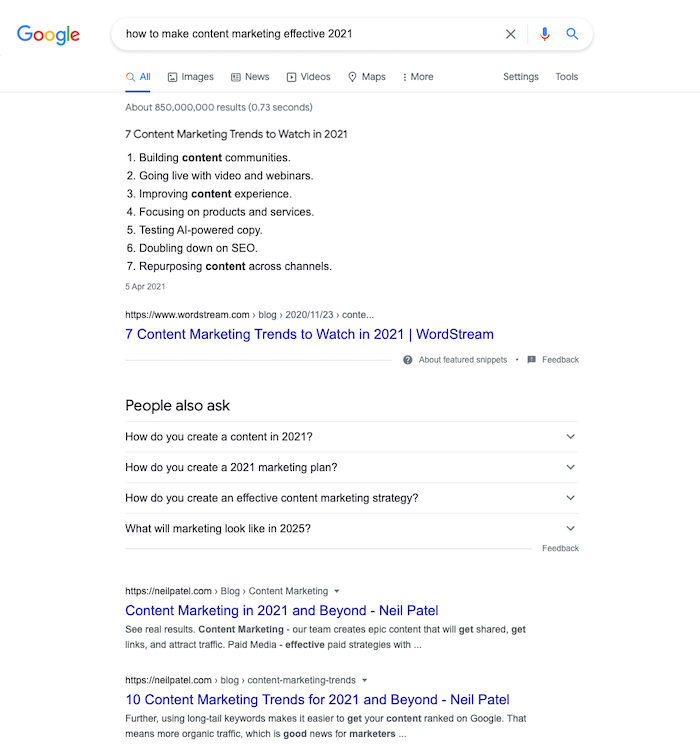
By adjusting our title tag, we can affect which of these searches we rank for.
Ultimately, the goal is to hit both, but that’s not always feasible.
Make sure your keyword is in your title, or you’ll find your articles buried in search results.
For example, when I search for the “best tacos in Tucson,” some restaurants are on page 9below, even Del Taco.
That’s a wasted opportunity for that taco capital of the country!
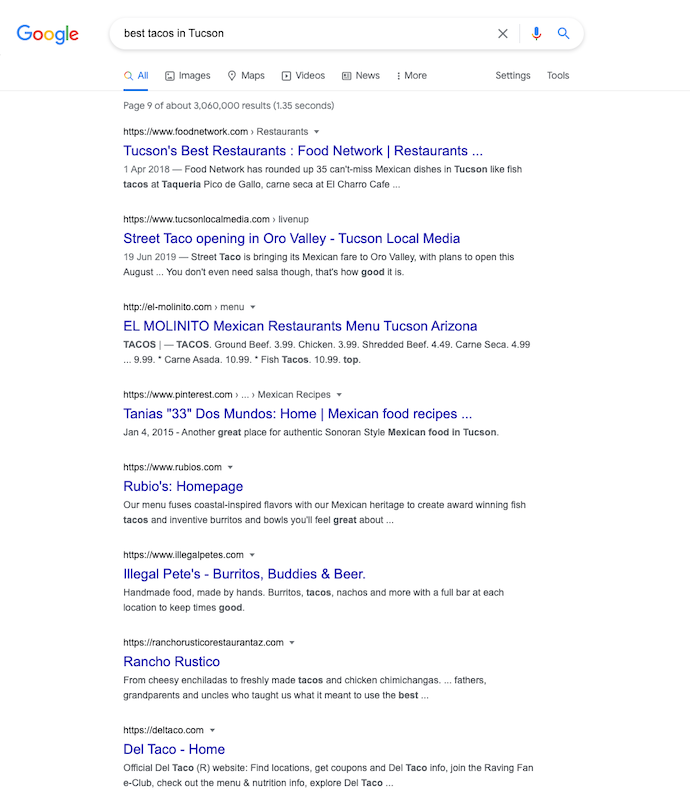
These small businesses could greatly improve their search results, sales, and ROI by simply adding “best tacos in Tucson” to their title tags.
Here’s a sample of the HTML required for a title tag located in your header.
<head>
<title>The Best Title Example I Could Come Up With</title>
</head>
In WordPress, it’s as easy as giving your page a title.
You really can’t miss it.
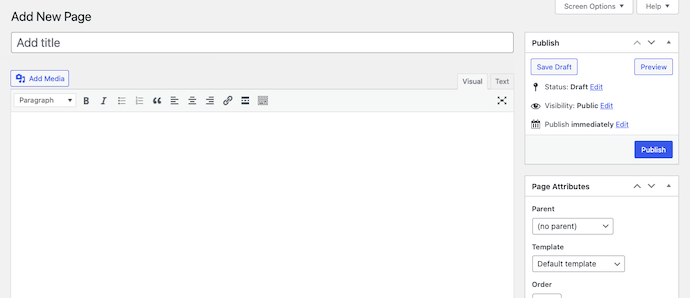
That’s all there is to it!
2. Image Tags
Like title tags, Image tags aren’t labeled “meta.”
They’re clearly used by search engines, link aggregators, and other sites to identify your site.
There are two image descriptions actually crammed into one tag.
Here’s what the HTML code looks like.
<img src=“image.jpg” alt=“image description” title=“image tooltip”>
Both the alt and title tags should be defined for the best experience.
The title displays on your screen when you hover your cursor over it.
The alt text displays when the image can’t be rendered (or is spoken to the blind and visually impaired).
When uploading an image to WordPress, you’ll be prompted to enter the title, caption, alt text, and description.
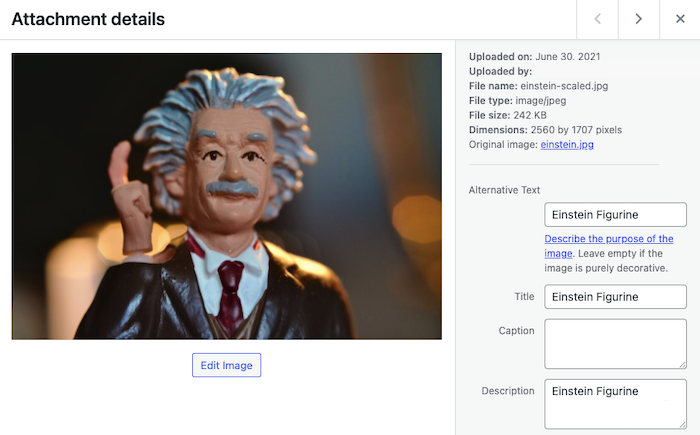
The more fields you fill out (even if you use the same information), the more searchable your images become.
It’s also a matter of ADA website compliance.
There are approximately 7.5 million people with some level of visual impairment in the U.S. alone.
That’s a huge segment of the population that wouldn’t have a great user experience without alt image tags.
Optimize your images for search engines and users.
3. Description Meta Tags
A meta description tag gives you a chance to provide an overview of the page’s content.
They’re limited to around 160 characters and aren’t directly tied to Google’s search algorithms at all.
Once again, the reason you need description tags is to improve the user experience.
Description tags encourage click-throughs.
Here’s what the HTML looks like:
<head>
<meta name= ”description” content=”This is an example of the text that will show up in search results. Read on to learn more about description tags.”>
</head>
Without a meta description, Google will default to whatever preview sentence it feels best encompasses the content.
This isn’t necessarily a bad thing.
This post doesn’t have a meta description (I rarely use them), and it ranks well.

Of course, my blogs are filled with relevant content in short, sweet sentences. Most of them would work as descriptions on their own.
Still, there’s no harm in adding additional information to make your content more searchable.
4. Robots Noindex and Nofollow Meta Tags
Robot meta tags aren’t always necessary.
By default, all of the pages and links you create on your website are indexed as ‘follow’ by search bots and web crawlers.
Whenever you want to redirect them, you’ll need a robot meta tag.
Here’s the noindex HTML code:
<html><head>
<meta name=”robots” content=”noindex” />
(…)
</head>
This would be within the header and indicate this page doesn’t need to be indexed.
It’s useful for syndicated and duplicate content that your customers/readers could use, but you don’t want credit in search indexes.
Here’s the HTML for a robot nofollow.
<meta name=”robots” content=”nofollow”>
This is used for links you don’t necessarily want to endorse.
For example, readers leaving links in my comments aren’t exactly endorsed by me, so a nofollow tag above the comments section keeps my site clean for bots.
Here’s a great infographic on when and how to use nofollow tags.
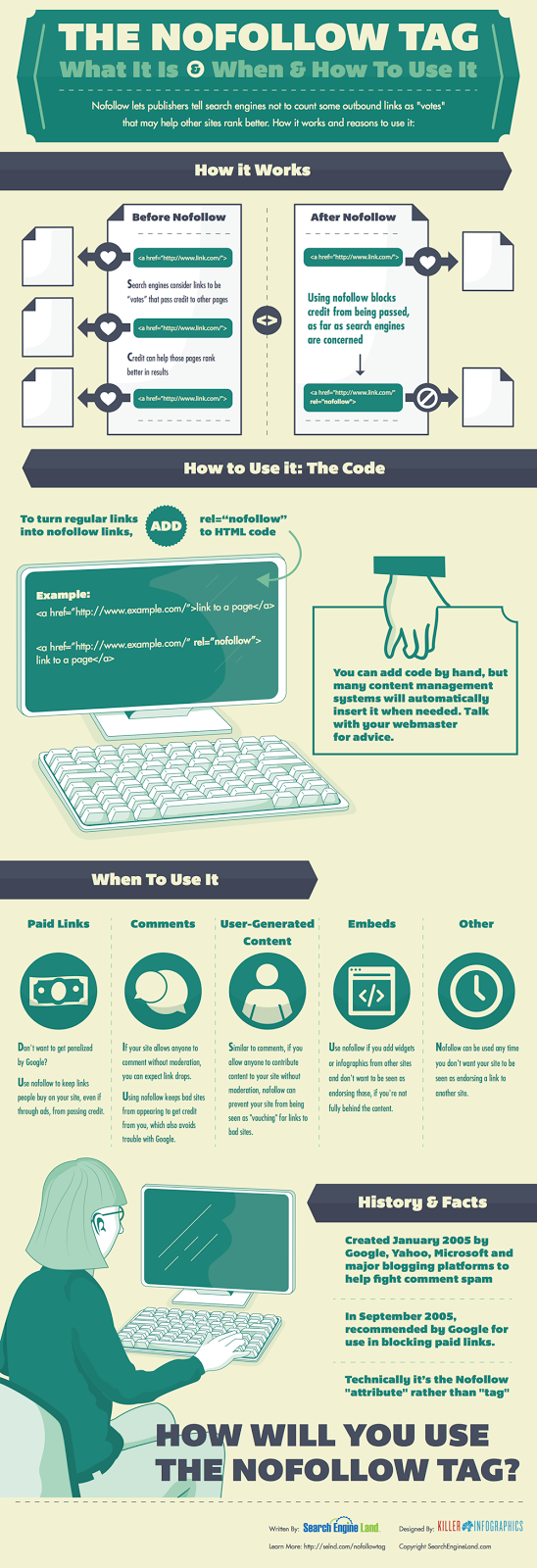
Now we get to one of the most controversial meta tags.
5. Keyword Meta Tags
Keyword tags aren’t used by search algorithms to determine search ranking.
Here’s what the HTML looks like:
<meta name=”keywords” content=”HTML, CSS, XML, JavaScript”>
I coach my SEO clients to ignore keyword tags because they don’t affect SEO.
That doesn’t necessarily make them useless, however. They’re especially useful in WordPress.
Keyword tags and categories can help Google determine which page on your site should rank for a search.
They also create a page in WordPress that provides one more indexed page.
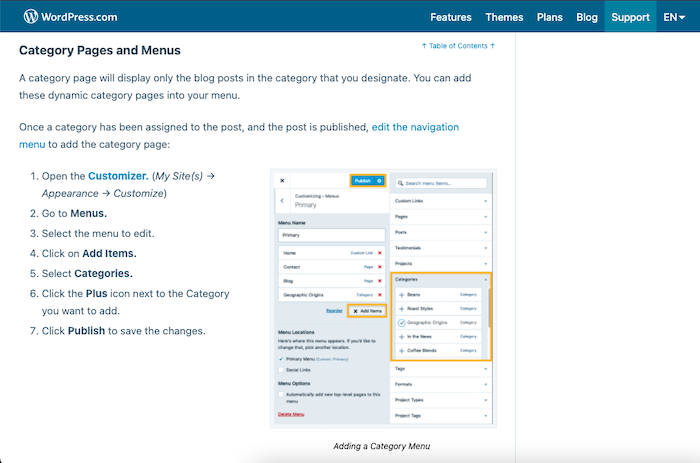
This means that, while your blog posts are focused on long-tail keywords, your tag and category pages have feeds covering the shorter keywords.
Categories can be used for the URL format, providing one more keyword to the page address.
This is accomplished under Settings > Permalinks in WordPress.
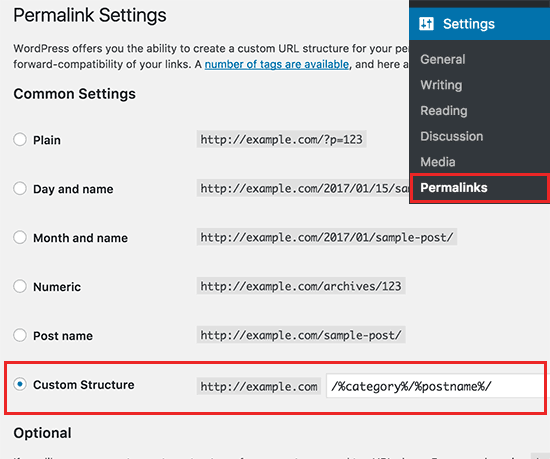
Adding this format provides context to your content.
Google loves context for search results!
Keywords also provide a big-picture overview of how many pages you have for each keyword.
You can use them to help plan your editorial calendar.
6. Viewport Tags
You don’t spend much time thinking about viewports, but they’re especially important in today’s mobile-first world of search.
On mobile devices, pages are shown in a popup window called a viewport that extends past the device’s border.
Here’s an illustration of what I’m talking about.

Developers can set the viewport size to increase mobile usability.
WordPress users can check this tag to learn this information for their templates.
You probably didn’t know that unless you’re already a web developer.
Since Google increasingly focuses on mobile-friendly websites, this meta tag could mean the difference between success and mobile failure.
Now that you have a basic understanding of meta tags and why they’re important, I’ll show you some of my favorite tools for manipulating them.
Free Tools to Add and Check Your Meta Tags
Don’t worry if this all sounds overwhelming—there are tons of tools to make it easy to get meta tags right. Here are two of my favorites.
Yoast SEO Plugin for WordPress
Yoast is a powerful SEO plugin for WordPress and one of the most-downloaded SEO and meta tags tools.
With Yoast, all of the pages and posts you publish have back-end options to increase social sharing, optimize SEO, update tags, and other metadata.
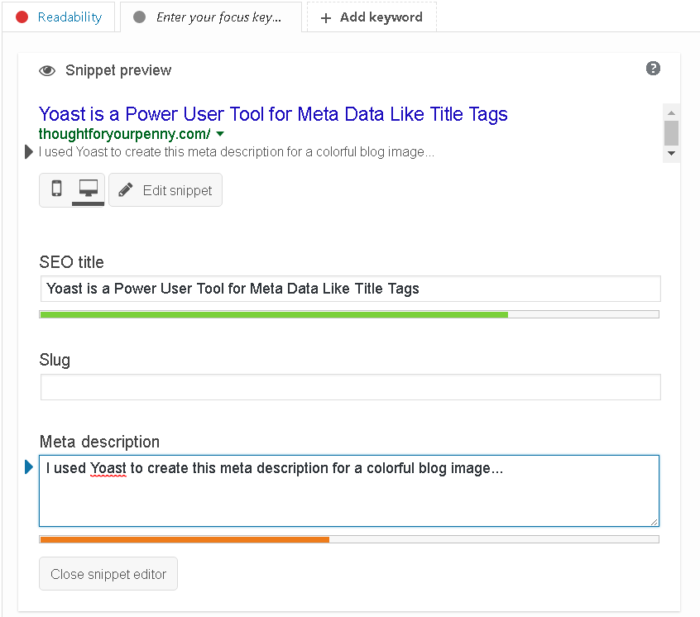
With Yoast installed on your WordPress site, a few clicks and a few seconds of your time are all it takes to add meta-tagging to your process.
Yoast also allows you to enter a focus keyword that doesn’t get added to the meta tags, allowing the back-end program to analyze your post.
BuzzStream Meta Tag Extractor
If you need a quick chart of the metadata that’s being used by your competition, BuzzStream’s Meta Tag Extractor is a sleek and simple solution.
Copy and paste a list of URLs, and you’ll be presented with the meta tag information.
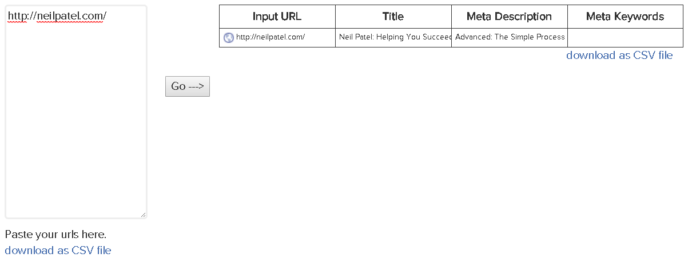
There’s even an option to download as a CSV file so that you can scrape large lists quickly.
It’s a quick and easy way to organize this data when you need it.
This free online tool does its job without all the bells and whistles.
Less Popular (but Still Useful!) Meta Tags
To be fully transparent, here’s a chart of HTML meta tags.
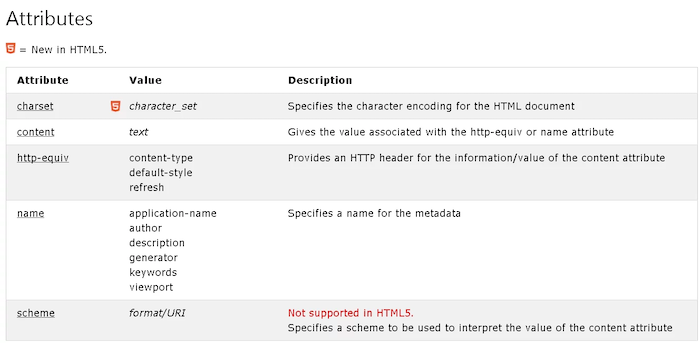
An author meta tag can be used to tell search engines who wrote a piece of content.
Authors have been used in the past for search results, but it’s not a factor anymore. However, you might use author tags if you run a multi-author blog.
WordPress does add this information to blogs when multiple users are contributing content.
It’s more a badge of honor for bloggers than anything else.
Most of the rest define parameters that should already be controlled on a server level.
While I ignored these meta tags, it doesn’t mean you have to. Feel free to add whatever information you’d like.
It doesn’t help search rankings, but it doesn’t hurt them, either.
Meta Tags FAQs
Meta tags are a type of HTML tag with information to share about your page. This helps search engines understand what it’s about so you can show up in the relevant search results.
Meta tags are important for SEO because they make sure search engines know what your content is about. Based on these tags, search engines will be able to show the website in the appropriate results. This way, people can find you easily.
Meta tags can provide hidden information that can be read by assistive technology. For those who with visual impairment, the image alt text can provide image descriptions for them.
Meta tags can be added directly into the HTML. You can also add them in tools like WordPress. There, you can add image alt tags, title tags and meta descriptions.
Meta Tags Conclusion
Meta tags are a basic part of HTML—and they can impact SEO.
Back in the early days of the internet, they were a signaling factor for search engines to understand what content is on a page.
The internet (and our relationship with it) has evolved exponentially since then.
Contextual search, AI digital assistants, and mobile devices are changing the way we view content.
Search engines are incentivized to provide the best search results possible, so meta tags are less important.
However, some, such as the titles and meta descriptions, are more important than ever before.
While less metadata is used, it’s still the first impression you’ll make on both robots and people.
What do your website’s meta tags say about you?
See How My Agency Can Drive Massive Amounts of Traffic to Your Website
- SEO – unlock massive amounts of SEO traffic. See real results.
- Content Marketing – our team creates epic content that will get shared, get links, and attract traffic.
- Paid Media – effective paid strategies with clear ROI.
AI
How AI is Transforming SEO and What Website Owners Need to Know

The digital landscape is changing fast, and artificial intelligence (AI) is at the forefront of this transformation. One of the fields AI is impacting significantly is Search Engine Optimization (SEO). In recent years, search engines have become increasingly intelligent in how they rank content, and AI is playing a major role in these changes.
For website owners, understanding how AI will impact SEO is essential to stay competitive and visible online. This article explores how AI is influencing SEO today, what we can expect in the near future, and the practical steps website owners can take to optimize their sites in an AI-driven SEO landscape.
The Role of AI in Modern SEO
SEO has evolved from keyword stuffing to a more complex practice involving quality content, user intent, and technical optimization. Today, search engines are looking at more than just keywords; they are focusing on understanding the intent and context behind a user’s search. This shift has been made possible by advances in AI and machine learning technologies.
AI helps search engines process and rank enormous amounts of data, allowing them to better interpret what users are looking for. Some notable AI technologies shaping SEO include:
- Natural Language Processing (NLP): NLP enables search engines to understand language more naturally, helping them interpret search queries more accurately.
- Deep Learning: This subset of AI allows search engines to improve their understanding over time by learning from vast amounts of data.
- Machine Learning Algorithms: Algorithms like Google’s RankBrain and BERT analyze search behavior and content to provide more relevant results.
These technologies are improving how search engines analyze content, making it crucial for website owners to keep up with AI-driven changes in SEO.
Key Ways AI is Impacting SEO
AI is already changing SEO in various ways. Let’s look at some of the main areas impacted by AI and what it means for website owners.
1. User Intent and Content Relevance
One of the biggest impacts of AI on SEO is how it helps search engines understand user intent. Modern algorithms don’t just match keywords; they analyze user behavior and context to provide results that answer the user’s underlying question.
This means that website owners need to prioritize content that addresses specific user needs. Instead of focusing solely on keywords, it’s essential to create content that answers common questions, solves problems, or fulfills a particular need that users may have.
Tip for Website Owners: Use AI-powered tools like chatbots and analytics platforms to understand what your users are looking for on your site. Tailor your content to align with those needs for improved relevance and engagement.
2. Personalization
AI allows search engines to personalize results based on individual preferences, search history, and location. For instance, someone searching for “best restaurants” in New York might see different results than someone searching for the same term in Los Angeles.
For SEO, this means a greater focus on localized and targeted content. Website owners need to consider how their content can appeal to specific demographics or regions to make the most of AI-driven personalization in search results.
Tip for Website Owners: Use AI-powered SEO tools to understand your audience’s demographics better. Consider adding location-based keywords or creating content specific to your main audience groups.
3. Voice Search Optimization
As AI-powered voice assistants like Siri, Alexa, and Google Assistant become more popular, voice search is changing how people interact with search engines. Voice searches tend to be longer and more conversational than text-based searches, and they often focus on local queries.
This shift toward voice search requires website owners to optimize for natural, conversational phrases and questions. Content that mirrors spoken language and answers specific questions has a better chance of ranking for voice search queries.
Tip for Website Owners: Consider using “long-tail” keywords and question-based phrases in your content. Tools like Answer the Public and Google’s “People Also Ask” feature can help identify popular questions related to your niche.
4. Content Quality and User Engagement Signals
AI has enabled search engines to assess content quality in ways that were previously difficult. Google, for example, uses AI to monitor user engagement metrics like click-through rates, bounce rates, and time spent on a page. Content that engages users is ranked higher because it’s more likely to be valuable.
This shift makes it critical for website owners to focus on content quality. Engaging and informative content not only attracts users but also keeps them on the page longer, which signals to AI-powered search engines that the content is valuable.
Tip for Website Owners: Focus on creating high-quality, easy-to-read content that keeps users engaged. Add visuals, infographics, or videos to make the content more interesting and shareable.
5. Image and Video Recognition
Search engines are now capable of recognizing and indexing images and videos through AI-driven technologies like image recognition. This means that visual content, once overlooked by search engines, is now a critical component of SEO.
For example, Google Lens allows users to search for information about objects simply by taking a photo, which has opened up new SEO possibilities for image-based content. Website owners can optimize images by using descriptive file names, alt text, and relevant captions.
Tip for Website Owners: Optimize images and videos by adding descriptive alt text and captions. Consider using AI-driven image recognition tools to ensure that visual content aligns with keywords and SEO strategies.
How AI Will Shape SEO in the Future
As AI continues to advance, we can expect even more changes in SEO. Here’s a look at some potential future trends and what they mean for website owners.
1. Predictive SEO
In the future, AI may enable “predictive SEO,” where algorithms can forecast popular keywords or trends before they peak. By analyzing data patterns and user behavior, AI could help website owners predict what users will search for, allowing them to create content proactively.
What This Means for Website Owners: Predictive SEO could make it easier to stay ahead of trends and anticipate the content users are likely to search for. Using predictive analytics tools, website owners can be more strategic about the content they create.
2. AI-Generated Content and Content Curation
AI is increasingly capable of generating high-quality content. Tools like GPT-3 and other advanced language models can write coherent articles, product descriptions, and more. While AI-generated content isn’t yet perfect, it could be a valuable tool for generating SEO-friendly content quickly and efficiently.
What This Means for Website Owners: In the future, website owners might use AI tools to supplement human-written content, allowing for quicker content creation. However, quality control will still be essential, as search engines are likely to favor content that feels authentic and engages readers.
3. Advanced User Behavior Analysis
AI-powered algorithms will become even better at analyzing user behavior, tracking every click, scroll, and interaction. This advanced tracking could lead to a more dynamic SEO landscape, where search engine rankings adjust in near real-time based on user engagement data.
What This Means for Website Owners: Continuous user engagement will be essential for maintaining high rankings. Website owners will need to be proactive in analyzing user behavior and refining their content to keep up with what resonates most with their audience.
4. Natural Language Processing (NLP) and Multilingual SEO
NLP capabilities in AI are advancing quickly, and search engines will become more adept at interpreting language, meaning SEO may become more language-neutral in the future. This could allow websites in one language to rank well in another, depending on user demand and relevance.
What This Means for Website Owners: To maximize reach, website owners might need to focus on multilingual SEO. Investing in high-quality translations and optimizing for a global audience can open up new SEO opportunities.
Practical Tips for SEO in an AI-Driven Future
Given the changes AI is bringing to SEO, website owners can take proactive steps to stay ahead:
- Focus on User-Centric Content: AI prioritizes content that genuinely answers users’ questions. Rather than focusing only on keywords, make sure your content addresses specific user needs and is easy to understand.
- Utilize AI Tools for Content Strategy: AI-powered tools like SEMrush, Ahrefs, and SurferSEO can help you analyze data trends, identify keyword opportunities, and optimize content effectively.
- Optimize for Voice Search: As more people use voice search, optimize your content for natural, conversational language. Include phrases that match how people speak rather than how they type.
- Enhance Visual SEO: Use descriptive file names, alt tags, and captions for images. Consider incorporating more videos and graphics to improve user engagement.
- Monitor User Engagement Metrics: Track metrics like bounce rate, time on page, and click-through rates to assess content quality. Make improvements based on user behavior to keep your content relevant.
- Experiment with AI-Generated Content: If your site needs frequent updates, consider using AI-generated content as a supplement to human-written content. Ensure it’s well-edited to meet quality standards.
Final Thoughts
AI’s impact on SEO is only beginning, but it’s clear that it will continue shaping how search engines rank content and how website owners approach optimization. By staying informed and adapting to these changes, website owners can not only maintain but improve their visibility in search engine results. Whether it’s optimizing for user intent, embracing predictive analytics, or enhancing visual content, AI provides numerous tools to create a richer, more engaging user experience.
For website owners willing to stay ahead of the curve, AI offers exciting new possibilities for SEO – transforming it from a keyword-driven strategy to a dynamic, user-centered approach that enhances both site performance and user satisfaction.
This article was written by the Entireweb Team.
SEARCHENGINES
Google Search Ranking Volatility October 26th & 27th & 23rd & 24th
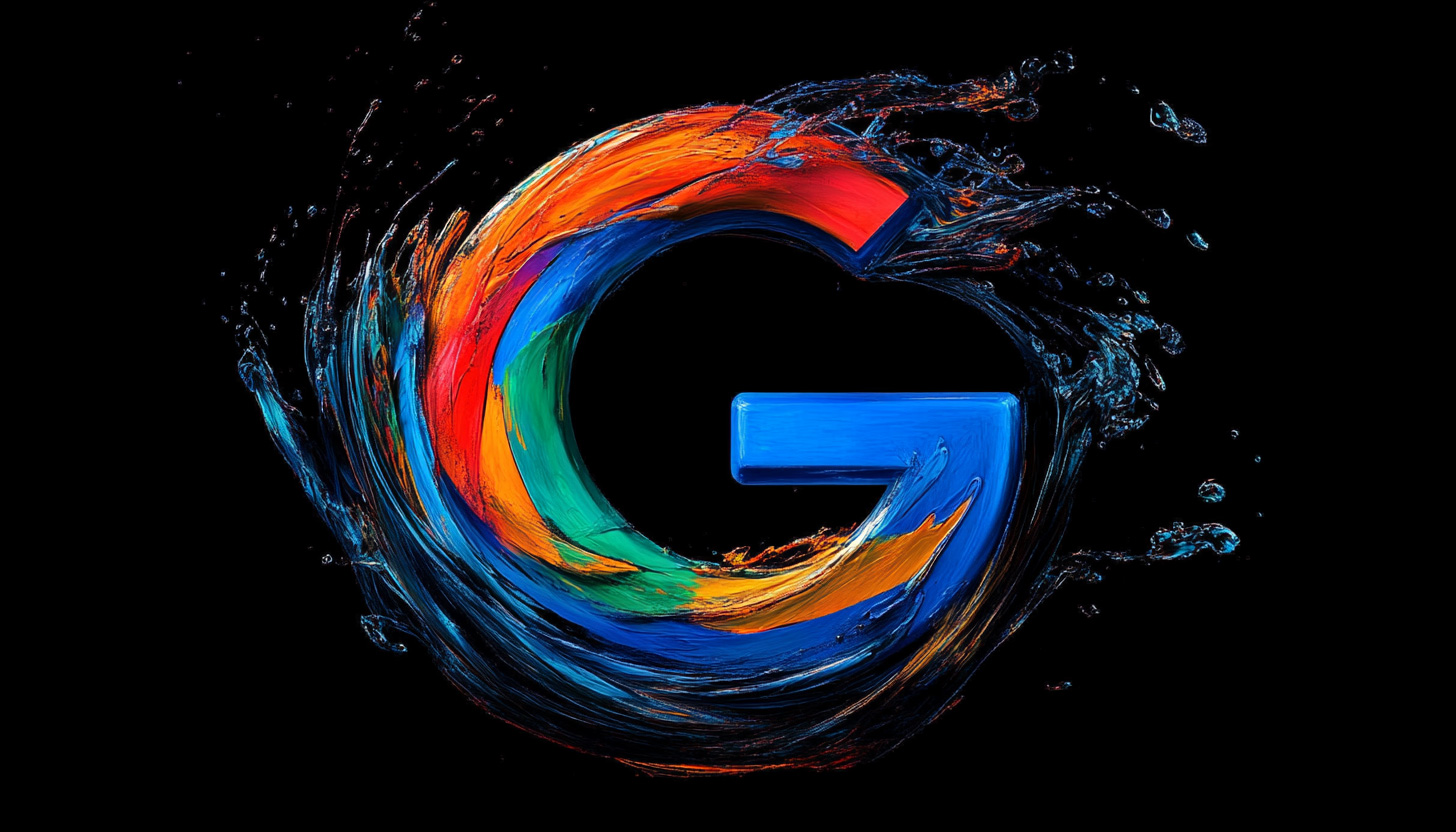
While I was offline, it seems we had two bouts of Google Search ranking volatility, one starting around Wednesday, October 23rd and 24th, and then again in the past 24 hours, starting on October 26th and 27th. I mean, this is a lot of the same as my previous Google Search ranking algorithm update coverage.
Again, I am seeing new intense chatter from the SEO community about big ranking changes in the past 24 hours and also from when I went offline on the 23rd and 24th of October.
As a reminder, we covered October 19th and 20th volatility and then on October 15th, October 10th and then before that on October 2nd which lasted a couple of days. The Google August 2024 core update started on August 15th and officially completed on September 3rd. But it was still super volatile the day after it completed and also weeks after it completed and it has not cooled.
We saw big signals on and around September 6th, September 10th or so and maybe around September 14th. We also saw movement around September 18th, last weekend and Septmeber 25th and September 28th or so.
Here is what I am seeing now.
SEO Chatter
Here is some of the chatter in the past 24 hours from both WebmasterWorld and over here:
Google shut down organic traffic completely today in Brazil. The Semrush sensor is normal(8,9), but the traffic is stopped.
Wow, traffic just died today. It’s like my traffic went on a weekend break too.
The worst thing is close to Christmas, it’s as if my website doesn’t even exist.
Why my category pages with little to no data getting indexed and appearing on first page while pages with content are no where to be found? This new update has totally messed up SERPs. Anyone else observing this behavior?
My “informational” site seems to be holding steady rank and traffic wise but seeing competitors drop from page one to 3 then back again to original position a few hours later, its like total flux and nothing I have ever seen, constant movement for months now, hour by hour…. What are they doing?
There is more but here is some of the chatter from Wednesday and Thursday:
Really low traffic today, according to GA.
Update today? Huge drop over here!
Does anyone understand the current chaos? Despite a good ranking, my traffic has dropped drastically since Friday and every day it gets less. The same applies to a number of other website owners I’ve spoken to in the last few days. Especially considering that Google traffic has increased dramatically since August. In the shop the same: until Friday, sales were good, now it’s just zombie traffic again.
Huge swings today again, yesterday it looked like they did a roll back to around March…. now the past few hours it looks like a roll back of a rollback. I think this is the new norm and another money grab by G to have organics in a constant state of flux to prevent any company/site having any sort of stability if not using ads?!
Drop today confirmed since yesterday.
Sheeesh. @rustybrick I’m seeing HUGE movement in last 24 hours, both gains and losses (naturally).— Taylor Kurtz (@RealTaylorKurtz) October 24, 2024
Yep, lots of volatility. For example, here’s a site heavily impacted by the September helpful content update (HCUX) that surged with the August core update, then dropped when a number of other HCUX sites dropped back down AFTER the August core update completed, but now surged… https://t.co/kBavOmX586 pic.twitter.com/f6O8S7YtuO— Glenn Gabe (@glenngabe) October 27, 2024
Google Tracking Tools
The tracking tools seem at their normal high levels, with nothing really jumping out as massive. So, it is a bit unusual not to see the spike in chatter along with the spike with the tools. Here is what they show:
SERPmetrics (not updated in a week or so):
So what are you all seeing?
I am covering this with a rare Sunday story as I catch up on other stories throughout the week.
Forum discussion at WebmasterWorld.
SEARCHENGINES
Google Ranking Movement, Sitelinks Search Box Going Away, Gen-AI In Bing & Google, Ad News & More
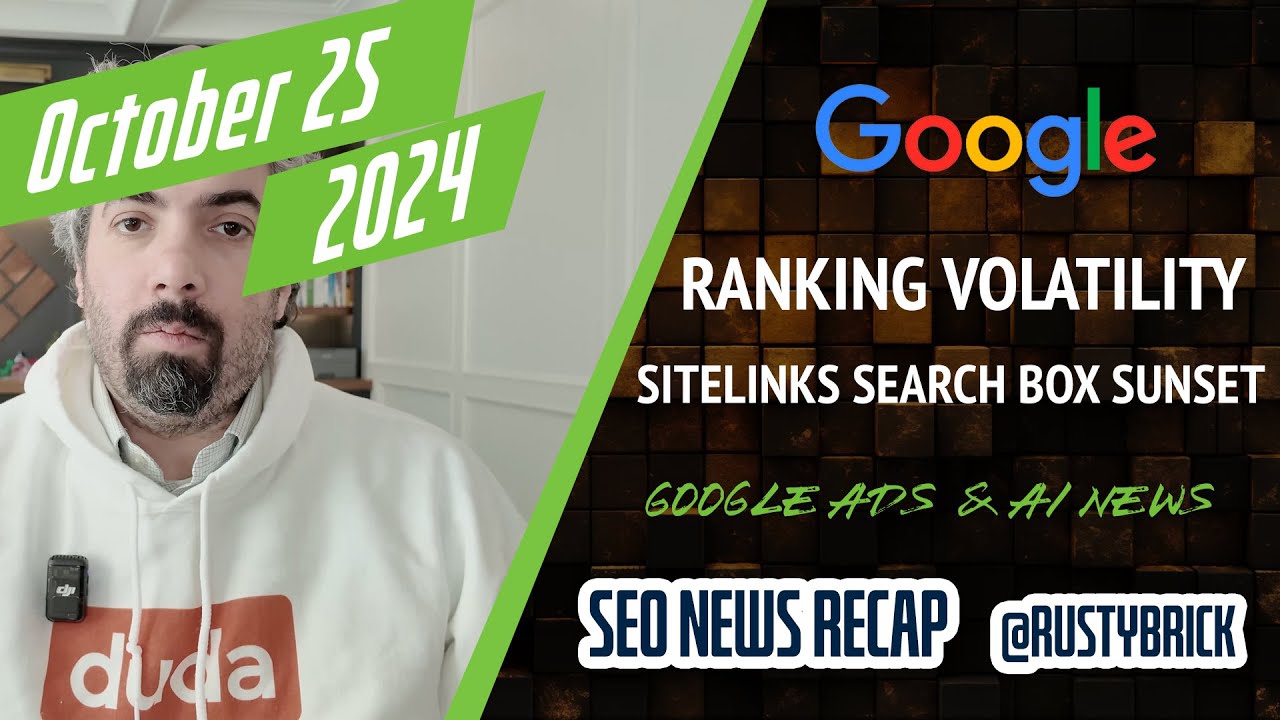
This week, we had more Google search ranking volatility to report on – surprise, surprise. Google is deprecating its Sitelinks Search Box next month. Google may have penalized Fortune Recommends over site reputation abuse. Google is showing generative AI throughout the search results. Google has this People’s Insights box that shows online forums for unprofessional medical advice. Bing Search is adding AI-enhanced summaries to its search results. There are several bugs with the Bing Webmaster Tools API and documentation. Google Ads performance max won’t take priority over search campaigns when in the same account. Also, Google Ads has sharable ad previews, asset experiments for Performance Max with product feeds and test adding assets and using Final URL expansion. Google search ads now uses travel feeds for hotel ads. Google has a watch video icon for video ads in search. Google to pause ads from showing after the electoral polls close on November 5th. Google Local Service Ads is testing request competitive quotes. Google Merchant Center is testing audience insights. Google Ads API version 18 is out. Nick Fox is the new head of Google Search, he is replacing the super controversial Prabhakar Raghavan. There is a new SEO board game coming out for the holidays. And I am offline today, when this was published, for a holiday, this was pre-written, pre-recorded and scheduled to go live today.s That was the search news this week at the Search Engine Roundtable.
SPONSOR: This week’s video recap is sponsored by Duda, the Professional Website Builder You Can Call Your Own.
Make sure to subscribe to our video feed or subscribe directly on iTunes, Apple Podcasts, Spotify, Google Podcasts or your favorite podcast player to be notified of these updates and download the video in the background. Here is the YouTube version of the feed For the original iTunes version, click here.
Search Topics of Discussion:
Please do subscribe on YouTube or subscribe via iTunes or on your favorite RSS reader. Don’t forget to comment below with the right answer and good luck!












